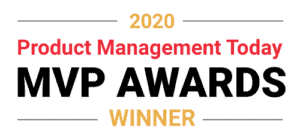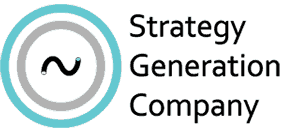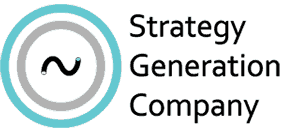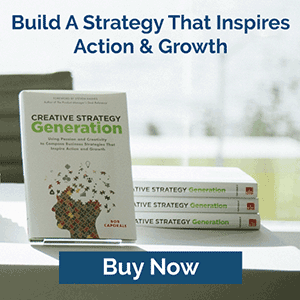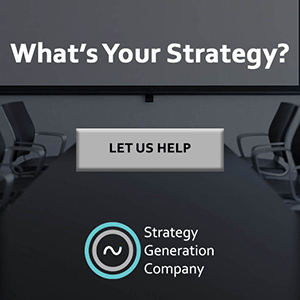On this episode of Dear Strategy, we answer the following question…
Dear Strategy:
“I come from a business that sells products. How do we develop a strategy that moves us into being a more solutions-oriented business?”
I’m going to answer this one in two different ways. First, I’ll cover what I think is being asked, and then I’ll cover what is actually being asked.
What I think is going on here is that this individual probably works for a company that makes tangible products (i.e. products that you can touch and feel). And, like most modern-day tangible product companies, they want to move at least some part of their portfolios to more digital or software-based products. I say this because most of my own clients happen to be in this exact situation; and most all of them refer to this situation in the exact same way.
“Today we’re making products, but we want to move more toward providing solutions.”
What they mean to say, of course, is that they want to move from making only tangible products to providing more non-tangible services – which, by the way, is hardly revolutionary, but almost always necessary in this day and age.
Assuming that my take on this question is correct, my answer is that there really is no difference in the strategy development process between these two approaches. I refer all the time on the podcast and in this blog to the Strategy Generation Framework that I use for developing strategies, which has 4 main stages to it:
- Vision
- Analysis
- Planning
- Execution
And I bring it up again here because the actual steps you need to take within each of these stages will be exactly the same no matter what type of strategy you are developing. In other words, you’ll still need to analyze your customers, your competitors, and your company; you’ll still need to set your goals, evaluate your options, and choose your actions; and you’ll still need to execute on your plan. At a tactical level, there will certainly be differences, such as the types of development processes you might embrace, the types of pricing strategies you might employ, and the types of service and support options you might offer. But the steps to creating the core of your strategy will be exactly the same.
Of course, the caution I always have for any company that may be looking to make this transition from tangible products into intangible services is that you should always let your strategic process drive your decisions. In other words, don’t just go digital because that’s what you think you should be doing (or, worse, because that’s what everyone else seems to be doing). Go digital because that’s what your customers need you to do, and that’s what the industry trends say you should be doing, and that’s what your competitors aren’t doing. Again, make sure that your strategy is driving your decisions and not the other way around.
“Make sure that your strategy is driving your decisions and not the other way around.”
And that brings me to the second way that I could approach answering this question – which would be based on the literal words that were written rather than on my interpretation of them.
When someone says they’re moving from “products to solutions,” they’re essentially implying that products and solutions are two different things. And, at least to my definition, that couldn’t be (or at least shouldn’t be) further from the truth.
A product is something that somebody produces and someone else consumes. And the only way that the latter part of that equation is going to be fulfilled is if whatever is being produced addresses some issue for whoever is doing the consuming. This, by the way, applies to all types of products – from tangible products, to non-tangible products, to software, to services. They are all products, and they are all solutions because those two terms should be one and the same.
That doesn’t mean there won’t be varying degrees of balance in this equation. Some products are going to be better at solving problems than others. But the fact remains that if a product is being consumed, it’s being consumed for a reason. And the more effectively it solves a problem (or the more problems it effectively solves) the more successful that product will ultimately be.
By the way, it’s important to note that not all problems come in the form of physical tasks that need to be accomplished. Yes, when someone needs to make a hole in a wall, that’s going to result in a pretty straightforward problem-to-solution relationship. But problems like “I need something to do” or “I need something that makes me feel better” are just as valid. And even though these emotional needs may be a bit harder to nail down, products that solve for them are just as much solutions as products that address physical needs.
With all of that said, I suppose there could be situations where companies find themselves making products that don’t solve for much of anything anymore. I word it like that because products in this category are usually right at the end of their once useful lives. But, even if you find yourself in this relatively short-lived scenario, my advice would be exactly the same. Go back to the strategic process and let the outcome of that process drive your decisions. And, while you’re at it, make sure that every other product (or service) that you offer is a solution to some problem that some customer has. Because, if it isn’t, then it probably won’t be a product for very much longer.
Listen to the podcast episode
Dear Strategy: Episode 110

Are you interested in strategy workshops for your product managers or business leaders? If so, please be sure to visit Strategy Generation Company by clicking the link below:
 Bob Caporale is the founder of Strategy Generation Company, the author of Creative Strategy Generation and the host of the Dear Strategy podcast. You can learn more about his work by visiting bobcaporale.com.
Bob Caporale is the founder of Strategy Generation Company, the author of Creative Strategy Generation and the host of the Dear Strategy podcast. You can learn more about his work by visiting bobcaporale.com.



